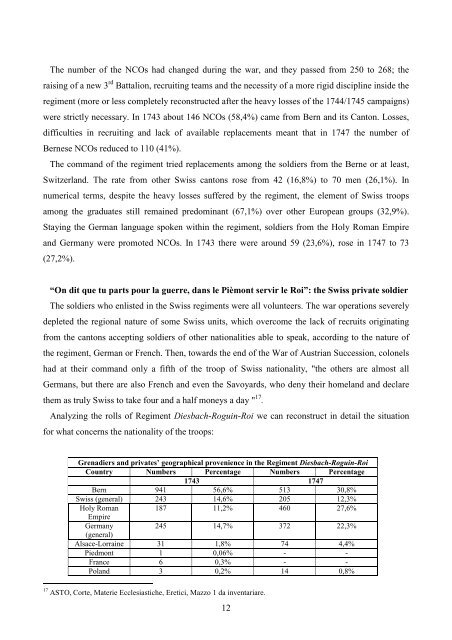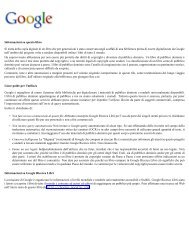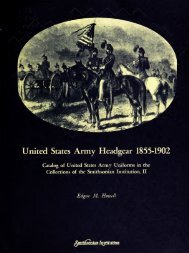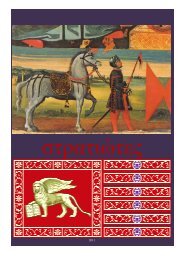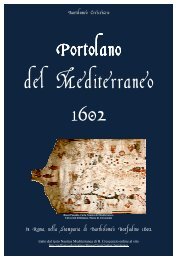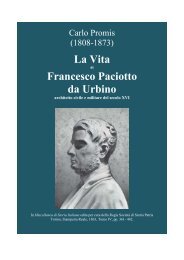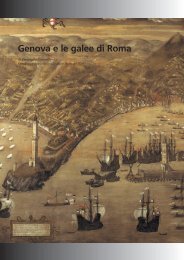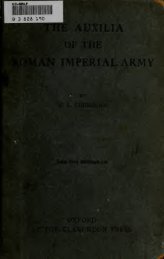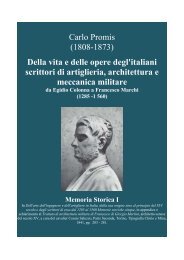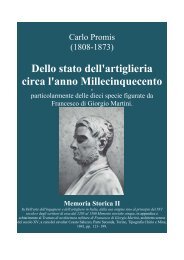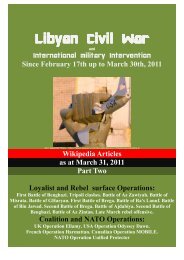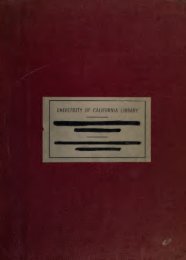Cerino-Badone, Swiss Regiments - Libreria Militare Ares
Cerino-Badone, Swiss Regiments - Libreria Militare Ares
Cerino-Badone, Swiss Regiments - Libreria Militare Ares
- No tags were found...
You also want an ePaper? Increase the reach of your titles
YUMPU automatically turns print PDFs into web optimized ePapers that Google loves.
The number of the NCOs had changed during the war, and they passed from 250 to 268; the<br />
raising of a new 3 rd Battalion, recruiting teams and the necessity of a more rigid discipline inside the<br />
regiment (more or less completely reconstructed after the heavy losses of the 1744/1745 campaigns)<br />
were strictly necessary. In 1743 about 146 NCOs (58,4%) came from Bern and its Canton. Losses,<br />
difficulties in recruiting and lack of available replacements meant that in 1747 the number of<br />
Bernese NCOs reduced to 110 (41%).<br />
The command of the regiment tried replacements among the soldiers from the Berne or at least,<br />
Switzerland. The rate from other <strong>Swiss</strong> cantons rose from 42 (16,8%) to 70 men (26,1%). In<br />
numerical terms, despite the heavy losses suffered by the regiment, the element of <strong>Swiss</strong> troops<br />
among the graduates still remained predominant (67,1%) over other European groups (32,9%).<br />
Staying the German language spoken within the regiment, soldiers from the Holy Roman Empire<br />
and Germany were promoted NCOs. In 1743 there were around 59 (23,6%), rose in 1747 to 73<br />
(27,2%).<br />
“On dit que tu parts pour la guerre, dans le Pièmont servir le Roi”: the <strong>Swiss</strong> private soldier<br />
The soldiers who enlisted in the <strong>Swiss</strong> regiments were all volunteers. The war operations severely<br />
depleted the regional nature of some <strong>Swiss</strong> units, which overcome the lack of recruits originating<br />
from the cantons accepting soldiers of other nationalities able to speak, according to the nature of<br />
the regiment, German or French. Then, towards the end of the War of Austrian Succession, colonels<br />
had at their command only a fifth of the troop of <strong>Swiss</strong> nationality, "the others are almost all<br />
Germans, but there are also French and even the Savoyards, who deny their homeland and declare<br />
them as truly <strong>Swiss</strong> to take four and a half moneys a day " 17 .<br />
Analyzing the rolls of Regiment Diesbach-Roguin-Roi we can reconstruct in detail the situation<br />
for what concerns the nationality of the troops:<br />
Grenadiers and privates’ geographical provenience in the Regiment Diesbach-Roguin-Roi<br />
Country Numbers Percentage Numbers Percentage<br />
1743 1747<br />
Bern 941 56,6% 513 30,8%<br />
<strong>Swiss</strong> (general) 243 14,6% 205 12,3%<br />
Holy Roman 187 11,2% 460 27,6%<br />
Empire<br />
Germany<br />
245 14,7% 372 22,3%<br />
(general)<br />
Alsace-Lorraine 31 1,8% 74 4,4%<br />
Piedmont 1 0,06% - -<br />
France 6 0,3% - -<br />
Poland 3 0,2% 14 0,8%<br />
17 ASTO, Corte, Materie Ecclesiastiche, Eretici, Mazzo 1 da inventariare.<br />
12


